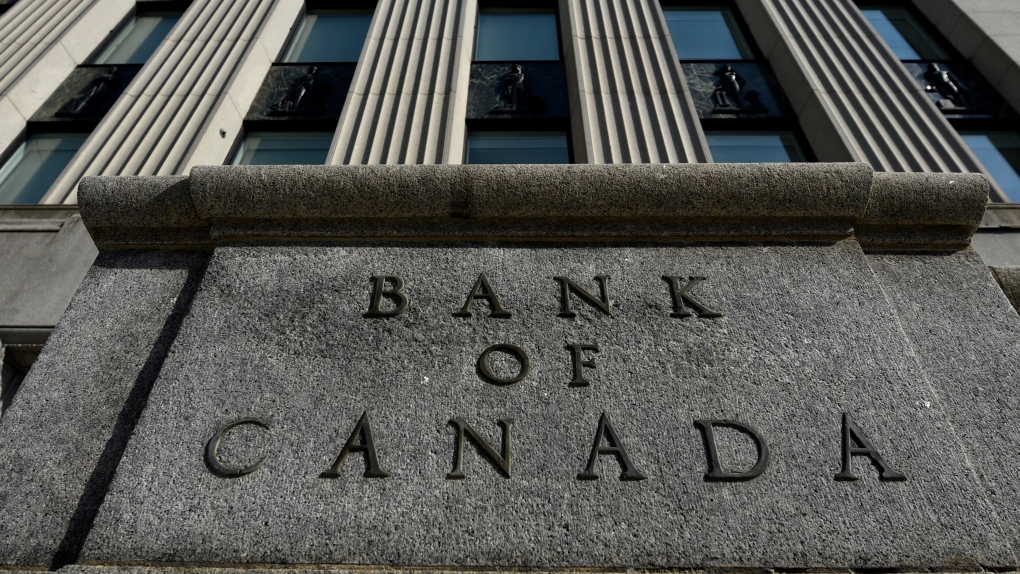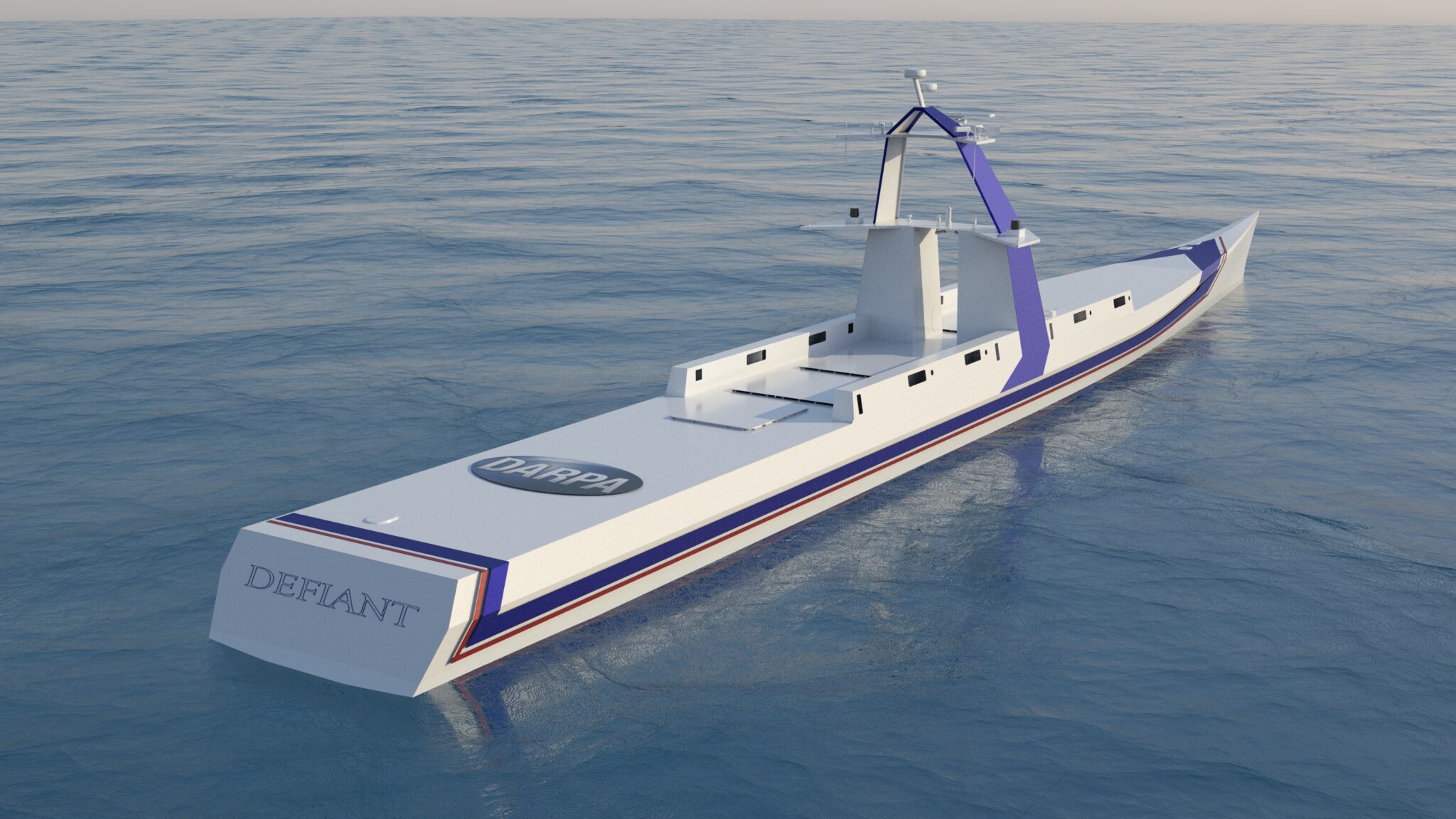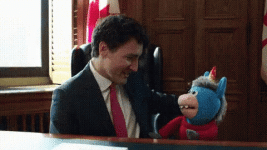I'll believe it when I see it.
You are using an out of date browser. It may not display this or other websites correctly.
You should upgrade or use an alternative browser.
You should upgrade or use an alternative browser.
Justin Trudeau hints at boosting Canada’s military spending
- Thread starter Maxman1
- Start date
FJAG
Army.ca Legend
- Reaction score
- 11,526
- Points
- 1,160
Weapons makers say Ottawa is leaving them in the dark on its plans to aid Ukraine
'No one in industry has a clue' about what the federal government has in mind, says industry spokesperson
Murray Brewster · CBC News · Posted: Jan 12, 2023
daftandbarmy
Army.ca Dinosaur
- Reaction score
- 26,890
- Points
- 1,160
Welcome to the club, Buddy....
'No one in industry has a clue' about what the federal government has in mind, says industry spokesperson
The association representing Canada's defence contractors says it's going to take a lot more than talk to put the industry on a so-called "war footing."
In a bluntly-worded opinion piece published online Wednesday, Christyn Cianfarani, executive director of the Canadian Association of Defence and Security Industries, said that Canada — unlike its allies — has not put in place a framework to ramp up production to meet the demand triggered by the Russian invasion of Ukraine.
Instead, Cianfarani wrote, the industry has heard "vague pleas" from the Liberal government "for companies to get with the program," without any clear sense of which items of equipment are needed and what the long-term expectations might be.
"Canadian defence companies can and would step up if they knew exactly what, and how much, to step up with," she wrote.
 www-cbc-ca.cdn.ampproject.org
www-cbc-ca.cdn.ampproject.org
Weapons makers say Ottawa is leaving them in the dark on its plans to aid Ukraine
'No one in industry has a clue' about what the federal government has in mind, says industry spokesperson
The association representing Canada's defence contractors says it's going to take a lot more than talk to put the industry on a so-called "war footing."
In a bluntly-worded opinion piece published online Wednesday, Christyn Cianfarani, executive director of the Canadian Association of Defence and Security Industries, said that Canada — unlike its allies — has not put in place a framework to ramp up production to meet the demand triggered by the Russian invasion of Ukraine.
Instead, Cianfarani wrote, the industry has heard "vague pleas" from the Liberal government "for companies to get with the program," without any clear sense of which items of equipment are needed and what the long-term expectations might be.
"Canadian defence companies can and would step up if they knew exactly what, and how much, to step up with," she wrote.
Weapons makers say Ottawa is leaving them in the dark on its plans to aid Ukraine
daftandbarmy
Army.ca Dinosaur
- Reaction score
- 26,890
- Points
- 1,160
Spencer100
Army.ca Veteran
- Reaction score
- 2,179
- Points
- 1,040
In all fairness neither does the government. Its just a do something after trudeau gets a meeting or phone callWelcome to the club, Buddy....
Weapons makers say Ottawa is leaving them in the dark on its plans to aid Ukraine
'No one in industry has a clue' about what the federal government has in mind, says industry spokesperson
The association representing Canada's defence contractors says it's going to take a lot more than talk to put the industry on a so-called "war footing."
In a bluntly-worded opinion piece published online Wednesday, Christyn Cianfarani, executive director of the Canadian Association of Defence and Security Industries, said that Canada — unlike its allies — has not put in place a framework to ramp up production to meet the demand triggered by the Russian invasion of Ukraine.
Instead, Cianfarani wrote, the industry has heard "vague pleas" from the Liberal government "for companies to get with the program," without any clear sense of which items of equipment are needed and what the long-term expectations might be.
"Canadian defence companies can and would step up if they knew exactly what, and how much, to step up with," she wrote.
Weapons makers say Ottawa is leaving them in the dark on its plans to aid Ukraine
www-cbc-ca.cdn.ampproject.org
Brad Sallows
Army.ca Legend
- Reaction score
- 7,067
- Points
- 1,040
Goliath, of course.That depends on what we mean by remote ground armour - if we are talking about fitting into my battlegroup above then I agree with you
Halifax Tar
Army.ca Fixture
- Reaction score
- 9,759
- Points
- 1,260
IMHO China's weakness is demographics:

 www.pewresearch.org
www.pewresearch.org
It's in decline. Some have speculated they have about a decade left until their economy collapses.
Add in an already weakening economy:
This all may cause some erratic behavior from the government.
Excellent podcast on the subject if you're interested:

Key facts about China’s declining population
China has had the world's largest population since at least 1950 but is now projected to experience an absolute decline as early as 2023.
It's in decline. Some have speculated they have about a decade left until their economy collapses.
Add in an already weakening economy:
This all may cause some erratic behavior from the government.
Excellent podcast on the subject if you're interested:
Last edited:
- Reaction score
- 4,364
- Points
- 1,160
This is one of the reasons I worry a lot about Russia becoming a Chinese vassal state.My money is on availability of fresh water in China over the next decade or two - that to me is the sleeping giant of possible 'casus belli' for conflict between the West (and its proxies) and China.
Many years ago (decades, actually) when I used to visit China on a fairly regular basis and had some contacts in both the government and the academy the issue of the Eastern and Central Siberian watersheds The Yenisei and Lena basins, especially) was on a lot of minds. There was chatter, then - 1990s and early 200s) about the desirability of "separating" Western, Central and Eastern Siberia from Russia and creating "independent" Asian states. Water is one of China's key weak areas.
- Reaction score
- 18,739
- Points
- 1,360
^this, and any other nation that has the younger categories of its population pyramid folding inside of its older groups…IMHO China's weakness is demographics:
It's in decline. Some have speculated they have about a decade left until their economy collapses.
Key facts about China’s declining population
China has had the world's largest population since at least 1950 but is now projected to experience an absolute decline as early as 2023.www.pewresearch.org
Oldie (-ish) but a goodie. Updates show Russia’s not insignificant loss of mobilized males will further impact Russia for decades and China is still feeling the impact of the one child policy. Canada at least figured that it needs to do something to address the growing shift to more aged demographics, hence the 400,000-500,000 immigrants/year target (no doubt focused on the younger demographic groups).
- Reaction score
- 5,345
- Points
- 1,040
FMS (foreign military sales) buys are actually pretty easy, it's all the hoops that the CAF has to jump through leading up to doing the FMS buy that takes time.The minister doesn’t want to answer because the answer is “by some bureaucratic sorcery; we are in a position where for us to arm another nation is more streamline, efficient, and has fewer hoops to jump through.”
Because it's not a buy for a CAF, not even sure if most of our processes even apply at all, so maybe was just a Cabinet level authorization for the dollar figure with DFAIT figuring out the delivery point.
Honestly love this, and hopefully whoever the team was that figured this one out gets recognized.
If we had bolted on our own buys on top of it would have just slowed it down, and because we aren't at war ourselves Ministerial/Cabinet discretion to bypass the normal obligations to ask for bids is pretty shaky (as that's all required under a lot of different international agreements, but also means Canadian companies have the ability to participate in bids for our allies procurements).
daftandbarmy
Army.ca Dinosaur
- Reaction score
- 26,890
- Points
- 1,160
Belly up to the public trough people.... while you can!
Note the 'restraint' shown by DND, though...
Rate of jobs growth more than three times greater than in private sector
There were 336,000 federal government employees in 2022, up from 257,000 in 2015 — a 30.7 per cent increase.
Since 2015, the number of federal, provincial and local employees has grown by 18.5 per cent, twice as fast as in the private sector, where employment growth was 9.0 per cent. What is less appreciated is the over-the-top employment growth in federal departments and agencies. There were 336,000 federal government employees in 2022, up from 257,000 in 2015 — a 30.7 per cent increase.
That bigger-than-ever federal bureaucracy is costing Canadians a bundle. Federal employee compensation rose from $38 billion in 2015 to $58 billion in 2021 (the latest year for which data are available) — a whopping 52 per cent increase. Yet this growth has not led to a higher standard of living: Canada’s per capita economic growth has been among the weakest among OECD countries since 2015.
It doesn’t have to be this way. During the final seven years of the Harper government, 2009-2015, federal employment compensation grew by only seven per cent and employment actually fell. Though not stellar, Canada’s per capita income growth did at least outpace U.S. growth.
Productivity in government is hard to measure (and not just because it’s sometimes miniscule!). Because it’s hard to know how to value government services they’re often proxied by the money spent producing them. And that’s a problem. If you can’t measure outputs, you don’t know if you are doing better. Instead, you judge productivity by looking at specific measures such as the time taken to process tax files or applications of one kind or another.
With so many new federal workers since 2015, have Canadians gotten better service? Yes, during the pandemic the federal civil service doled out money at lightning speed, though without the usual care in making sure it was appropriately spent. That helped prevent a depression — which was definitely a valuable “output” — but can we say the same thing today now that the economy has recovered?
The government’s Phoenix payment system, introduced in 2015, is an awful mess, having generated many thousands of incorrect payments to federal employees and contractors. Immigrants can’t get into the country, given a backlog of 2.2 million cases that has only just begun to improve this past couple of months. We can’t deliver LNG to Europe because federal regulations have killed export opportunities.
Even the little things aren’t easily done. It recently took a friend six months to receive a passport even though Service Canada promises to deliver by mail within 20 days. Another friend applied for Old Age Security in September and is still waiting for the application to be reviewed. Luckily, no financial stress is involved — but it very well could have been. For several years now I have found it impossible to change a mailing address on Service Canada’s website.
Yet federal employment has been growing by leaps and bounds. Over 16,000 employees were added to the Canada Revenue Agency last year, accounting for almost half the increase in federal employment in 2022. Since 2015, CRA employment is up 37 per cent to 55,000. Will the agency make decisions faster? Getting a decision on a medium-complex objection takes on average 318 days according to the CRA. (It doesn’t say whether the decision is guaranteed to be correct.)
The federal government’s second largest department — Employment and Social Development Canada — now has 35,609 employees, two-thirds more than seven years ago. Though COVID measures wound down last year, the department added another 3,000 employees rather than figure out how to improve service without expanding its already bloated workforce.
Not all departments have grown as fast, if at all, as the rest of the federal civil service. National Defence is the third largest department with 26,400 civilian employees but has grown only half as fast as the rest of the civil service since 2015. And despite world tensions military employment actually fell by 23 employees. Employment also fell at Veterans Affairs last year, by 233 positions, a 6.5 per cent reduction in that department’s staffing.

 financialpost.com
financialpost.com
Note the 'restraint' shown by DND, though...
Jack Mintz: Federal employment growth is now out of hand
Rate of jobs growth more than three times greater than in private sector
There were 336,000 federal government employees in 2022, up from 257,000 in 2015 — a 30.7 per cent increase.
We often talk about Canada’s poor productivity and low per capita income growth. What we don’t discuss is productivity in the public sector. The goal of governments may be to make our lives better but is a bigger public service really giving us a higher standard of living?
Since 2015, the number of federal, provincial and local employees has grown by 18.5 per cent, twice as fast as in the private sector, where employment growth was 9.0 per cent. What is less appreciated is the over-the-top employment growth in federal departments and agencies. There were 336,000 federal government employees in 2022, up from 257,000 in 2015 — a 30.7 per cent increase.
That bigger-than-ever federal bureaucracy is costing Canadians a bundle. Federal employee compensation rose from $38 billion in 2015 to $58 billion in 2021 (the latest year for which data are available) — a whopping 52 per cent increase. Yet this growth has not led to a higher standard of living: Canada’s per capita economic growth has been among the weakest among OECD countries since 2015.
It doesn’t have to be this way. During the final seven years of the Harper government, 2009-2015, federal employment compensation grew by only seven per cent and employment actually fell. Though not stellar, Canada’s per capita income growth did at least outpace U.S. growth.
Productivity in government is hard to measure (and not just because it’s sometimes miniscule!). Because it’s hard to know how to value government services they’re often proxied by the money spent producing them. And that’s a problem. If you can’t measure outputs, you don’t know if you are doing better. Instead, you judge productivity by looking at specific measures such as the time taken to process tax files or applications of one kind or another.
With so many new federal workers since 2015, have Canadians gotten better service? Yes, during the pandemic the federal civil service doled out money at lightning speed, though without the usual care in making sure it was appropriately spent. That helped prevent a depression — which was definitely a valuable “output” — but can we say the same thing today now that the economy has recovered?
The government’s Phoenix payment system, introduced in 2015, is an awful mess, having generated many thousands of incorrect payments to federal employees and contractors. Immigrants can’t get into the country, given a backlog of 2.2 million cases that has only just begun to improve this past couple of months. We can’t deliver LNG to Europe because federal regulations have killed export opportunities.
Even the little things aren’t easily done. It recently took a friend six months to receive a passport even though Service Canada promises to deliver by mail within 20 days. Another friend applied for Old Age Security in September and is still waiting for the application to be reviewed. Luckily, no financial stress is involved — but it very well could have been. For several years now I have found it impossible to change a mailing address on Service Canada’s website.
Yet federal employment has been growing by leaps and bounds. Over 16,000 employees were added to the Canada Revenue Agency last year, accounting for almost half the increase in federal employment in 2022. Since 2015, CRA employment is up 37 per cent to 55,000. Will the agency make decisions faster? Getting a decision on a medium-complex objection takes on average 318 days according to the CRA. (It doesn’t say whether the decision is guaranteed to be correct.)
The federal government’s second largest department — Employment and Social Development Canada — now has 35,609 employees, two-thirds more than seven years ago. Though COVID measures wound down last year, the department added another 3,000 employees rather than figure out how to improve service without expanding its already bloated workforce.
Not all departments have grown as fast, if at all, as the rest of the federal civil service. National Defence is the third largest department with 26,400 civilian employees but has grown only half as fast as the rest of the civil service since 2015. And despite world tensions military employment actually fell by 23 employees. Employment also fell at Veterans Affairs last year, by 233 positions, a 6.5 per cent reduction in that department’s staffing.

Jack Mintz: Federal employment growth is now out of hand
Is a bigger public service really giving us a higher standard of living?, asks Jack Mintz. Read on
- Reaction score
- 1,288
- Points
- 1,140
And yet we have to wait 80 days to renew a PR card. It takes 20 business days to renew a CDN passport.Belly up to the public trough people.... while you can!
Note the 'restraint' shown by DND, though...
Jack Mintz: Federal employment growth is now out of hand
Rate of jobs growth more than three times greater than in private sector
There were 336,000 federal government employees in 2022, up from 257,000 in 2015 — a 30.7 per cent increase.
We often talk about Canada’s poor productivity and low per capita income growth. What we don’t discuss is productivity in the public sector. The goal of governments may be to make our lives better but is a bigger public service really giving us a higher standard of living?
Since 2015, the number of federal, provincial and local employees has grown by 18.5 per cent, twice as fast as in the private sector, where employment growth was 9.0 per cent. What is less appreciated is the over-the-top employment growth in federal departments and agencies. There were 336,000 federal government employees in 2022, up from 257,000 in 2015 — a 30.7 per cent increase.
That bigger-than-ever federal bureaucracy is costing Canadians a bundle. Federal employee compensation rose from $38 billion in 2015 to $58 billion in 2021 (the latest year for which data are available) — a whopping 52 per cent increase. Yet this growth has not led to a higher standard of living: Canada’s per capita economic growth has been among the weakest among OECD countries since 2015.
It doesn’t have to be this way. During the final seven years of the Harper government, 2009-2015, federal employment compensation grew by only seven per cent and employment actually fell. Though not stellar, Canada’s per capita income growth did at least outpace U.S. growth.
Productivity in government is hard to measure (and not just because it’s sometimes miniscule!). Because it’s hard to know how to value government services they’re often proxied by the money spent producing them. And that’s a problem. If you can’t measure outputs, you don’t know if you are doing better. Instead, you judge productivity by looking at specific measures such as the time taken to process tax files or applications of one kind or another.
With so many new federal workers since 2015, have Canadians gotten better service? Yes, during the pandemic the federal civil service doled out money at lightning speed, though without the usual care in making sure it was appropriately spent. That helped prevent a depression — which was definitely a valuable “output” — but can we say the same thing today now that the economy has recovered?
The government’s Phoenix payment system, introduced in 2015, is an awful mess, having generated many thousands of incorrect payments to federal employees and contractors. Immigrants can’t get into the country, given a backlog of 2.2 million cases that has only just begun to improve this past couple of months. We can’t deliver LNG to Europe because federal regulations have killed export opportunities.
Even the little things aren’t easily done. It recently took a friend six months to receive a passport even though Service Canada promises to deliver by mail within 20 days. Another friend applied for Old Age Security in September and is still waiting for the application to be reviewed. Luckily, no financial stress is involved — but it very well could have been. For several years now I have found it impossible to change a mailing address on Service Canada’s website.
Yet federal employment has been growing by leaps and bounds. Over 16,000 employees were added to the Canada Revenue Agency last year, accounting for almost half the increase in federal employment in 2022. Since 2015, CRA employment is up 37 per cent to 55,000. Will the agency make decisions faster? Getting a decision on a medium-complex objection takes on average 318 days according to the CRA. (It doesn’t say whether the decision is guaranteed to be correct.)
The federal government’s second largest department — Employment and Social Development Canada — now has 35,609 employees, two-thirds more than seven years ago. Though COVID measures wound down last year, the department added another 3,000 employees rather than figure out how to improve service without expanding its already bloated workforce.
Not all departments have grown as fast, if at all, as the rest of the federal civil service. National Defence is the third largest department with 26,400 civilian employees but has grown only half as fast as the rest of the civil service since 2015. And despite world tensions military employment actually fell by 23 employees. Employment also fell at Veterans Affairs last year, by 233 positions, a 6.5 per cent reduction in that department’s staffing.

Jack Mintz: Federal employment growth is now out of hand
Is a bigger public service really giving us a higher standard of living?, asks Jack Mintz. Read onfinancialpost.com
MilEME09
Army.ca Veteran
- Reaction score
- 2,384
- Points
- 1,210
Sets us up to be like Greece, look what happened to their economy when 80% of workers were I'm the public service.And yet we have to wait 80 days to renew a PR card. It takes 20 business days to renew a CDN passport.
- Reaction score
- 1,288
- Points
- 1,140
Debt to GDP ratio we are similar to Greece - in fact we are higher than Greece.Sets us up to be like Greece, look what happened to their economy when 80% of workers were I'm the public service.
What is NOT being talked about right now is the amount of federal income tax revenue that went last year, pre substantial interest rate hikes, compared to what will have to go this year, next year and the next few going forwards, to cover just the interest on the debt. Much like all the chatter about the average CDN needing to cut back on expenditures in order to deal with large mortgage payment increases, our Federal Government will be in the EXACT same situation going forwards. Which in turn means, either large cuts to services/programmes will occur, a substantial income tax increase is coming to the 60% of Canadians who actually pay income taxes.
Roughly 7.10$ out of every 100$ in income tax goes to servicing the interest on the debt today. Its safe to say that this number will be north of 8$ per 100 in 2023 and more than likely higher yet in 2024.
- Reaction score
- 1,288
- Points
- 1,140
FYI - along the same lines.Debt to GDP ratio we are similar to Greece - in fact we are higher than Greece.
What is NOT being talked about right now is the amount of federal income tax revenue that went last year, pre substantial interest rate hikes, compared to what will have to go this year, next year and the next few going forwards, to cover just the interest on the debt. Much like all the chatter about the average CDN needing to cut back on expenditures in order to deal with large mortgage payment increases, our Federal Government will be in the EXACT same situation going forwards. Which in turn means, either large cuts to services/programmes will occur, a substantial income tax increase is coming to the 60% of Canadians who actually pay income taxes.
Roughly 7.10$ out of every 100$ in income tax goes to servicing the interest on the debt today. Its safe to say that this number will be north of 8$ per 100 in 2023 and more than likely higher yet in 2024.
"the Bank of Canada dramatically expanded its assets as part of a government bond purchasing program. Also known as quantitative easing, the policy was part of the central bank's efforts to stimulate the economy.
That expansion in assets is now costing the central bank, as it paid for the government bonds with the creation of settlement balances.
With interest rates now elevated, the interest charges the central bank pays on these settlement balances has exceeded the interest it earns on the government bonds."

Bank of Canada may lose billions over next few years: report
The Bank of Canada may lose up to $8.8 billion over the next few years, according to a new report warning the central bank may run into a communications challenge as a result of the losses.
Spencer100
Army.ca Veteran
- Reaction score
- 2,179
- Points
- 1,040
I have been screaming about that for years! For a decade (or more) we lived in fairyland. The piper will be paid. Part of it is the language they use (and its on propose I believe) QE no one gets it. If they would tell the truth its in the end just printing money. But they don't say that.FYI - along the same lines.
"the Bank of Canada dramatically expanded its assets as part of a government bond purchasing program. Also known as quantitative easing, the policy was part of the central bank's efforts to stimulate the economy.
That expansion in assets is now costing the central bank, as it paid for the government bonds with the creation of settlement balances.
With interest rates now elevated, the interest charges the central bank pays on these settlement balances has exceeded the interest it earns on the government bonds."

Bank of Canada may lose billions over next few years: report
The Bank of Canada may lose up to $8.8 billion over the next few years, according to a new report warning the central bank may run into a communications challenge as a result of the losses.www.ctvnews.ca
Eye In The Sky
Army.ca Legend
- Reaction score
- 3,780
- Points
- 1,160
Debt to GDP ratio we are similar to Greece - in fact we are higher than Greece.
What is NOT being talked about right now is the amount of federal income tax revenue that went last year, pre substantial interest rate hikes, compared to what will have to go this year, next year and the next few going forwards, to cover just the interest on the debt. Much like all the chatter about the average CDN needing to cut back on expenditures in order to deal with large mortgage payment increases, our Federal Government will be in the EXACT same situation going forwards. Which in turn means, either large cuts to services/programmes will occur, a substantial income tax increase is coming to the 60% of Canadians who actually pay income taxes.
Roughly 7.10$ out of every 100$ in income tax goes to servicing the interest on the debt today. Its safe to say that this number will be north of 8$ per 100 in 2023 and more than likely higher yet in 2024.

- Reaction score
- 7,438
- Points
- 1,160
You know it was the side that lost WWII that though along those lines...
They imagined the next Wunderwaffe would be the one that gave them the upper hand over the masses of the Soviets and Western Allies.

DARPA’s NOMARS program looks to chart a course for future uncrewed vessels - Naval News
An industry team led by Serco is continuing to progress detail design of NOMARS USV ahead of beginning prototype construction later this year.
Wunderwaffe or radar, rockets and jet engines?
A pinch of technology won't change your recipe. A fistful can.
- Reaction score
- 5,415
- Points
- 1,140
My point was that autonomous systems are not the war winner, just like radar, rockets and jet engines weren't. There will be a roll for autonomous systems, but they aren't a panacea for our equipment and staffing issues.
DARPA’s NOMARS program looks to chart a course for future uncrewed vessels - Naval News
An industry team led by Serco is continuing to progress detail design of NOMARS USV ahead of beginning prototype construction later this year.www.navalnews.com
Wunderwaffe or radar, rockets and jet engines?
A pinch of technology won't change your recipe. A fistful can.
- Reaction score
- 7,438
- Points
- 1,160
My point was that autonomous systems are not the war winner, just like radar, rockets and jet engines weren't. There will be a roll for autonomous systems, but they aren't a panacea for our equipment and staffing issues.
I agree. There are no panaceas. But my sense is that change happens incrementally. Every plant I have walked into over the years has had better technology than the last - manning and education requirements have constantly changed. And we have to take note of those changes and take advantage of what we can.
And education requirements haven't always gone up on the shop floor. Jobs that used to be held by guildsmen in Europe are now being performed by "watchkeepers" operating in second and third languages.
Similar threads
- Replies
- 34
- Views
- 8K
- Replies
- 2
- Views
- 5K
- Article
- Replies
- 545
- Views
- 183K
- Replies
- 18
- Views
- 8K

